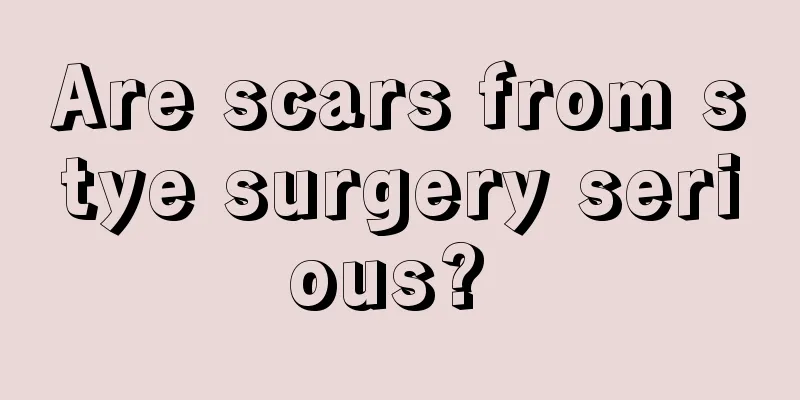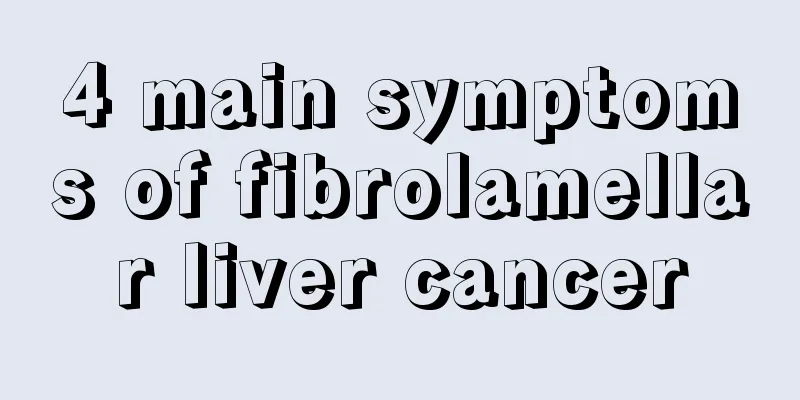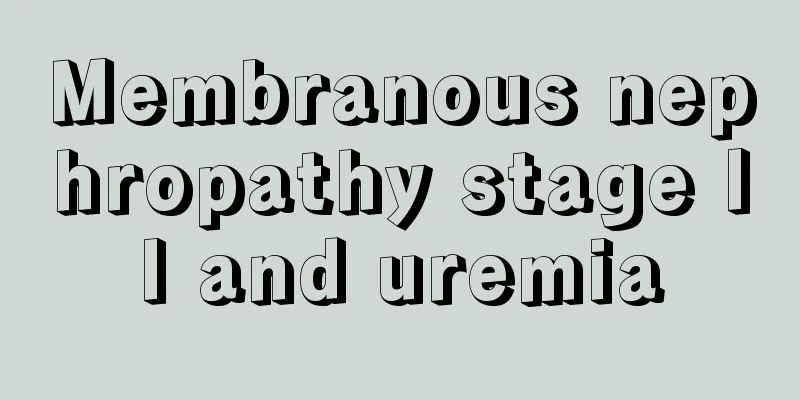Are scars from stye surgery serious?

|
Stye is a common skin disease. It does not cause much harm in itself, but it seriously affects the appearance, so people who love beauty have to remove it. Stye surgery is very simple and generally does not leave any scars. Patients can rest assured about the treatment without having to worry about aesthetic issues. 1. Will stye surgery leave scars? There will generally be no scars left after stye incision and drainage, so don't be too nervous or worried. If it is an external stye, an incision is usually made along the skin grain on the surface of the abscess to drain the pus thoroughly, and generally no scars will be left. 2. Causes There are two kinds of glands on the eyelids. The sebaceous glands at the root of the eyelashes open into the hair follicles. The meibomian glands are buried in the tarsal plates near the conjunctiva and open into the eyelid margins. Stye is an acute suppurative inflammation of these two glands. The bacteria that cause styes are mostly Staphylococcus aureus. 3. Clinical manifestations 1. Localized redness, swelling, heat and pain on the eyelid skin, and edema of the adjacent conjunctiva. 2. When pus accumulates locally, yellow pus heads appear. External hordeolum occurs in the sebaceous glands at the root of the eyelashes and manifests itself on the skin surface; internal hordeolum occurs in the meibomian glands and manifests itself on the conjunctival surface. After rupture and drainage of pus, the pain will be relieved and the redness and swelling will subside. 3. Severe cases are accompanied by enlarged and tender preauricular and submandibular lymph nodes, general chills, fever, etc. IV. Treatment 1. Early hot compress or magnetic therapy Promote infiltration absorption or rapid suppuration of nodules. 2. Surgical incision When the inflammation is under control and pus accumulates to form a fluctuating feeling, it can be drained by incision, and the necrotic or granulation tissue can be properly cleaned. Depending on the situation, placement of a drainage strip can be considered. After the inflammation subsides, if there is still residual granulation tissue or nodules left, surgical removal can be performed again. However, it should be noted that the skin incision of the external hordeolum should be parallel to the eyelid margin, and the conjunctival incision of the internal hordeolum should be perpendicular to the eyelid margin. Avoid inappropriate squeezing to prevent the inflammation from spreading into the orbit and cranium, causing orbital cellulitis, cavernous sinus phlebitis, meningitis and abscess, which may be life-threatening. 3. For stubborn and recurrent cases Autoimmune therapy is available. Patients with systemic fever and swollen preauricular and submandibular lymph nodes can be treated with antibiotics. |
<<: Can people with high blood pressure run?
>>: What are the symptoms of sciatica?
Recommend
Three typical symptoms of kidney cancer
If you experience symptoms such as hematuria, bac...
What is the best way to treat sweaty and smelly feet
Sweaty and smelly feet are very embarrassing for ...
What are the toners that shrink pores?
If you want to effectively shrink pores, many peo...
What is the reason for the crack in the buttocks
Many people often say that there are cracks in th...
Gastric cancer usually causes pain in two places
Gastric cancer generally causes pain in two place...
Shocked! Did you know? One plate of mosquito coils is equal to 6 packs of cigarettes
As midsummer approaches, it is really unpleasant ...
What is the reason for the pain in my ears?
The ear is a very important organ in our body. On...
In summer, spleen and stomach health is the top priority, diet should also prevent diarrhea
The climate is hot in summer, and a large amount ...
Correct posture for brushing teeth
Although we brush our teeth every day, many peopl...
What is the reason for having big lumps all over my body after eating mango?
Mango is a very common fruit in daily life. Mango...
Burning sensation when applying aloe vera gel on face
Aloe vera gel is a skin care product made from fr...
What are the early symptoms of rheumatism? It turns out to be these three types
Rheumatism is a common disease in daily life. It ...
My neck itches and turns red when I scratch it
Itching may seem like a normal little thing, but ...
Experts explain the advantages of traditional Chinese medicine in treating lymphoma
Although there are still many medical methods for...
What is the effective way to treat myopia?
With the advancement of technology, electronic de...









